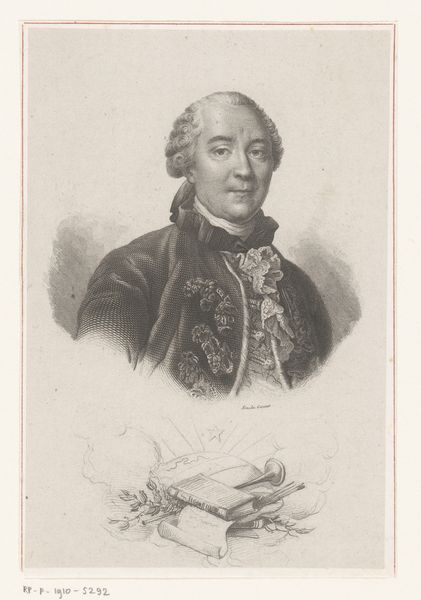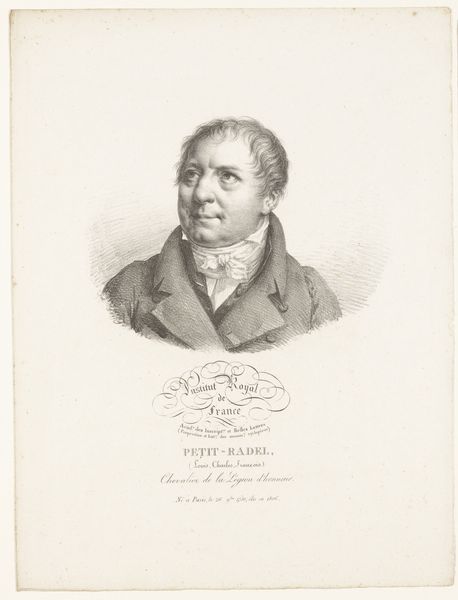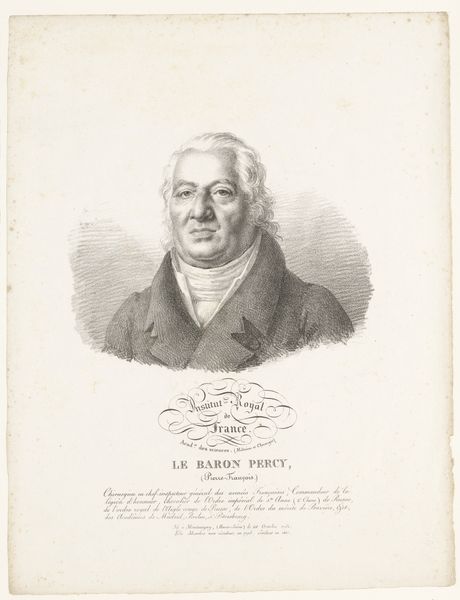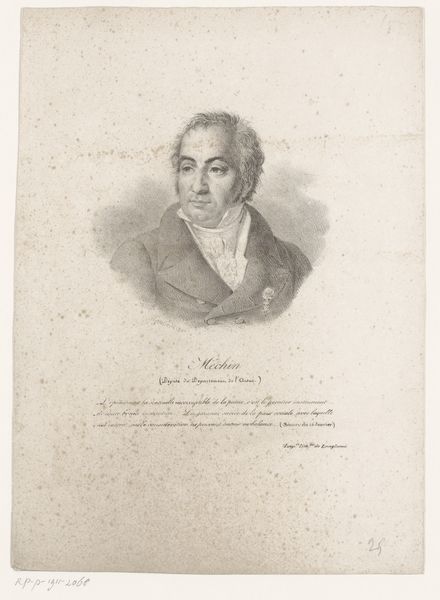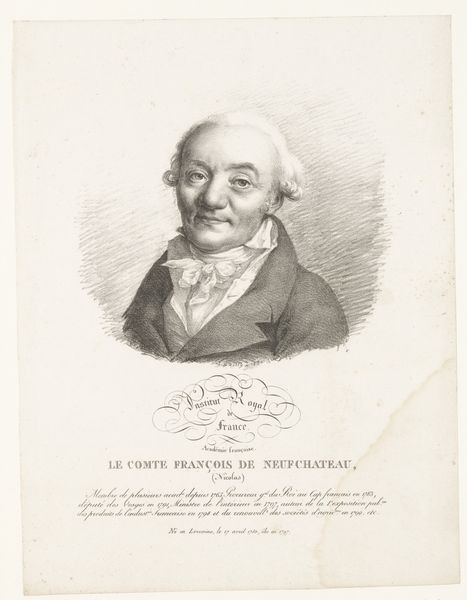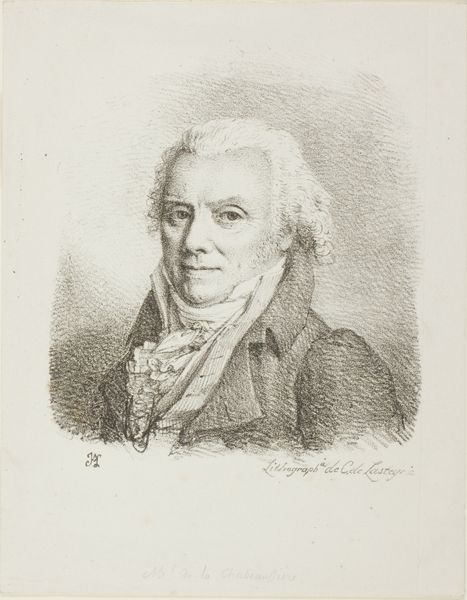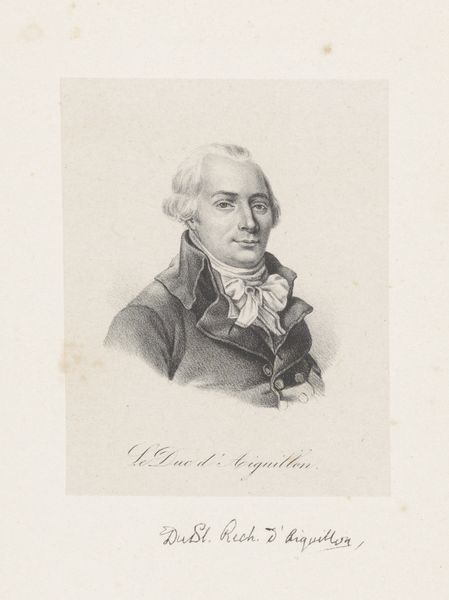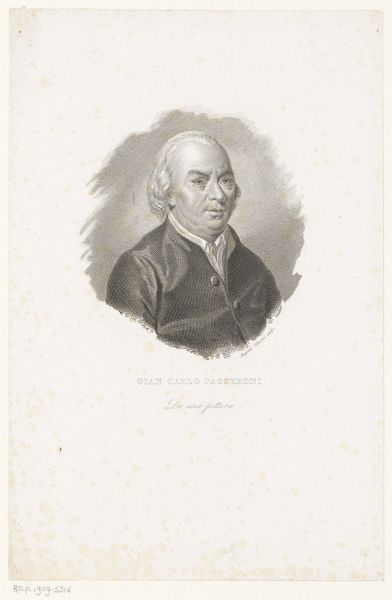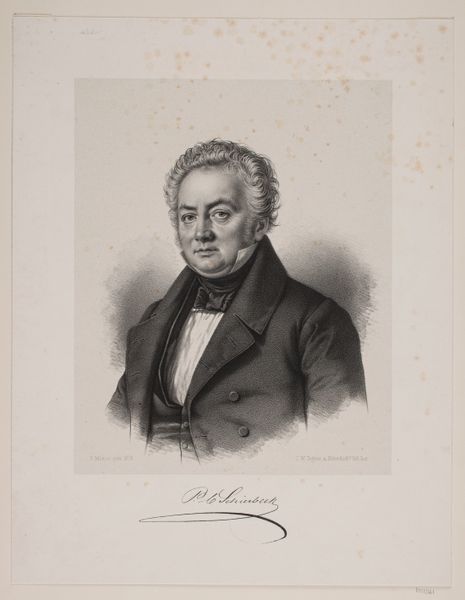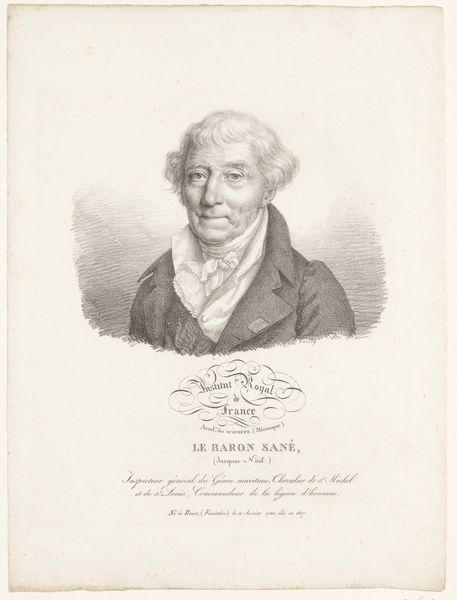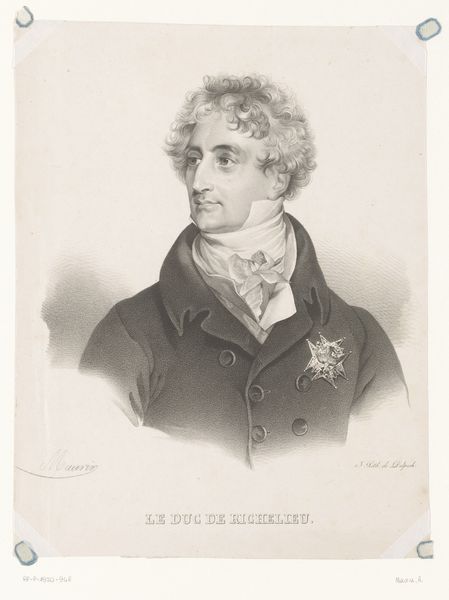
drawing, pencil
#
portrait
#
pencil drawn
#
drawing
#
neoclacissism
#
facial expression drawing
#
light pencil work
#
pencil sketch
#
old engraving style
#
portrait reference
#
pencil drawing
#
pencil
#
limited contrast and shading
#
portrait drawing
#
pencil work
Dimensions: height 317 mm, width 221 mm
Copyright: Rijks Museum: Open Domain
Editor: This is Julien-Léopold Boilly’s "Portret van de scheikundige Jean-Antoine Chaptal," a pencil drawing from 1821. The delicate linework and soft shading give it a very neoclassical feel. What can you tell me about this work? Curator: Absolutely. Beyond its neoclassical style, it’s important to consider who Chaptal was. A chemist, yes, but also a powerful figure during the French Revolution and under Napoleon. Boilly’s portrait captures a man of science and of state, but also implicitly reflects the power dynamics of the era. Notice how the inscription highlights Chaptal's titles. How do you think those elements contribute to our understanding of the image? Editor: I see what you mean. It's more than just a portrait, it’s a statement about his position in society. But isn't it also somewhat idealized? I mean, are we getting an accurate representation, or a carefully constructed image? Curator: Precisely! The portrait’s very existence speaks to the construction of identity and power. Consider the legacy Chaptal, and Boilly by extension, are crafting. Think about what a portrait meant at a time where painting, drawing, and engraving, was in many ways the cultural ancestor to what the photograph means now. The careful rendering reinforces an image of intellect and authority, while perhaps obscuring more complex aspects of his personality and actions within a tumultuous political context. Does seeing the work this way change your understanding of it? Editor: It does. It makes me think about all the choices that went into creating this image, and what they say about the relationship between art, power, and identity. Curator: Exactly. By examining these intersections, we reveal the portrait's cultural significance within its historical moment, but also its relevance for us today. Editor: It’s fascinating to think about how much a simple portrait can reveal about an era and the people who shaped it. Curator: Indeed. Hopefully, we now see art not as existing in a vacuum but as active voices within socio-political and intellectual dialogues.
Comments
No comments
Be the first to comment and join the conversation on the ultimate creative platform.

